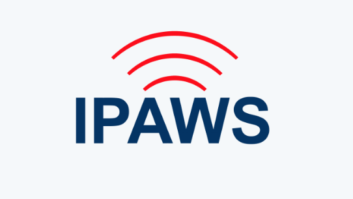When you think about it, the term �routine� maintenance doesn�t really make that much sense; we fix things routinely because we never really know ahead of time when something will break. Most things don�t routinely need replacement, and sometimes, replacing parts routinely just wears out their associated systems faster. In the ideal world, things would get replaced just before they wear out.
Routine maintenance schedules are a pretty dull tool.

With the proliferation of solid-state transmitters, routine maintenance has become even less so. Transmitters in particular have become members of the Internet of Things faster than a lot of other devices. Some �call home� to the manufacturer when their fans start to slow, their filters clog, their keep-alive batteries lag or something is about to burn up.
The really special ones let you sign up for a level of service that initiates a chain of events at the manufacturer in the event that parts are needed. You get the parts delivered at an appropriate speed and up-to-date installation instructions attached to the email that you can forward to that IT person who wants to get into RF. I�m going to refer to this feature as the �Analytics of Things.� AoT is all about the use of information technology to complete as much as possible of a process that can be automated.
It�s a win-win. Manufacturers get to sell parts, to keep things updated and to gather performance metrics that can turn into product improvements. You get the parts and instructions without having to go to the site and do diagnostics, and they don�t have to do a lot of customer service (i.e., hours of hand-holding and consoling). If you like it, then maybe they sell even more new AoT devices. Everyone is happy.
It seems like just yesterday most of us were isolating our equipment on closed IP networks for security purposes. Now we invite entities in to help us maintain the ever-more-complex and foreign equipment. Security didn�t get less important, friends, nor have the bad guys dropped their game. We are willing to take a calculated risk, balancing the threat of hacking versus the benefits of AoT. Is there really any other way forward, though?
21st CENTURY BUSINESS MODEL
According to some sources, 20 percent of the population free-lances (doing occasional gigs) and 15 percent of us moonlight (meaning regular work). In the last century, companies were all about large workforces and capital-intensive businesses. Now, in this century, the largest retailer has no inventory or stores; the largest media giant doesn�t own a newspaper or broadcast station; and let�s not forget Uber, the quasi-cab company where individuals can make something of a living driving their own car, using their own insurance as �contractors.�
I�m going to suggest that the next step in transmitter maintenance is AoT that calls upon Uber-type engineers�broadcast engineers who work with RF�to do the actual, hands-on work. Full-time or after hours, broadcast engineers who work on transmitters will likely get a call from some Uber-engineering service, and bid on doing work at a transmitter site they might never have seen. If available, you make a bid and take the gig, download the directions you�ll need, and off you go to meet a drone with the replacement parts at the transmitter site. The door lock opens when you get to it with your tracking cell phone. A camera records you working. The station manager or PD (sorry��brand manager�) rates youx-number of stars for the quality of the work you just did.
Transmitter work has, in most cases, devolved into the replacement of modules, or the occasional switch or fan. Yet, there seem to be fewer and fewer people able to even do that.
The Wandering Engineer is an industry stalwart who has been in broadcasting since the days of Marconi and Tesla. He gives his thoughts on the current state of broadcast engineering and the broadcast engineer.












